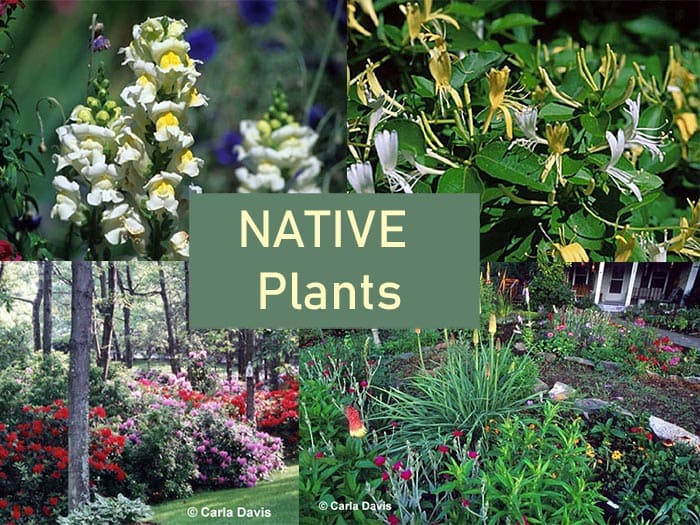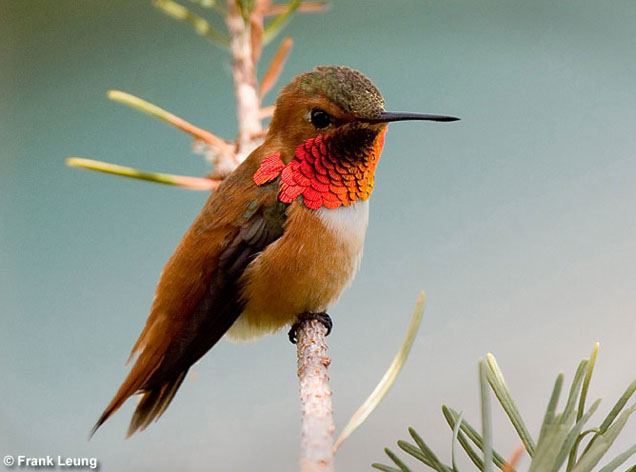
Minnesota Plants for Wildlife Habitat & Conservation Landscaping
Do you enjoy observing nature…hearing the song of the chickadee…watching hummingbirds fill up on nectar from trumpet vines…listening to the chattering of squirrels…seeing the beauty and grace of a monarch butterfly perched on a milkweed… experiencing the antics of a Mockingbird…the cooing of the Mourning Doves…the swiftness of the Cottontail…and the brilliance of a Cardinal or Baltimore Oriole?
If the answer is “yes”, you’ll probably want to landscape your property for wildlife so you can experience even more from Mother Nature by attracting more wildlife to your property.
Wildlife doesn’t just randomly appear in a given area. It is there because of favorable habitat. The essential elements that you must provide in your habitat are food, water, cover and a place to raise a family. To attract the most wildlife, you need native trees, shrubs, groundcover, vines and wildflowers, many of which will provide food and shelter.
Native or indigenous plants naturally occur in the region in which they evolved. They are adapted to local soil, rainfall and temperature conditions, and have developed natural defenses to many insects and diseases. Because of these traits, native plants will grow with minimal use of water, fertilizers and pesticides. Wildlife species evolve with plants; therefore, they use native plant communities as their habitat. Using native plants helps preserve the balance and beauty of natural ecosystems.
Remember the function served by plants and structures is more important than their appearance. In other words, don’t base your planting decisions solely on what a plant looks like. Following are WindStar Wildlife Institute’s plant recommendations for wildlife habitats in Minnesota:
Trees
Tall–Eastern Hemlock, , Eastern White Pine, Balsam Fir, Common Juniper, Norway Spruce, Northern Pin Oak, Bur Oak, Shagbark Hickory, Butternut, Black Walnut, White Oak
Medium/Small–Serviceberry, Eastern Redbud, Wild Plum, Pie Cherry, Amur Chokecherry, Common Chokecherry, Eastern Red Cedar

Hummingbirds are very common in Minnesota.
Shrubs
Summer food–Highbush Blackberry, Northern Dewberry, Black Raspberry, Red Raspberry, American Elderberry, Lowbush Blueberry, Highbush Blueberry, Lingenberry,
Fall food–Red-osier Dogwood, Winterberry, American Mountain Ash, Gray Dogwood, Silverberry, Inkberry, Common Juniper, Canada Yew, Bearberry
Winter food–Bittersweet, American Highbush Cranberry, Glossy Black Chokeberry, Viburnums, Northern Bayberry, Sumacs, Red Chokeberry, Common Snowberry, Wolfberry, Coralberry, Wayfaringbush, Nannyberry, Spicebush
Butterfly, Bee & Moth
New Jersey Tea, Buttonbush, Sweet Pepperbush, Spicebush, Pussy Willow, Narrowleaf Meadowsweet, Wolfberry, Coralberry, Preston Lilac, Old-fashioned Weigela, Dill, Asters, Sweet William, Sweet Pea, Sweet Marjoram, Black-eyed Susan, Scarlet Sage, Hollyhock, Indian Hemp, Intermediate Dogbane, American Columbine, Swamp Milkweed, Prairie Milkweed, Common Milkweed, Butterflyweed, New England Aster, Turtlehead, Tickseed Sunflower, Joe-Pye Weed, Purple Coneflower, Fireweed, Oxeye Sunflower, Lupine, Prairie Blazingstar, Gayfeather, Gay Goldenrod, Cardinal Flower
Groundcovers
Straw Lily, Violet Wood Sorrel, Partridgeberry, Wintergreen, Blue Wood Sedge, Wild Ginger, Golden Ragwort
Vines
Scarlet Trumpet Creeper, Northern Catalpa, Scarlet Trumpet Honeysuckle, Old-fashioned Weigela
Grasses and Legumes
Indiangrass, Little Bluestem, Sideouts Grama, Prairie Milkvetch, Switchgrass, White Prairie Clover, Purple Prairie Clover, Prairie Cordgrass, Northern Dropseed, Junegrass
Minnesota’s landscape includes a wide range of natural communities from the hardwood forests to the north, including the “land of lakes” to rolling hills and stream valleys in the south. The Minnesota Native Plant Society and Minnesota Department of Natural Resources can provide lists of plants for a specific region.
For more information on improving your wildlife habitat, visit the WindStar Wildlife Institute web site. On the web site, you can also apply to certify your property as a wildlife habitat, register for the “Certified Wildlife Habitat Naturalist e-Learning course, become a member and sign up for the FREE WindStar Wildlife Garden Weekly e-mail newsletter.
Read next: Most Common Birds of Minnesota

